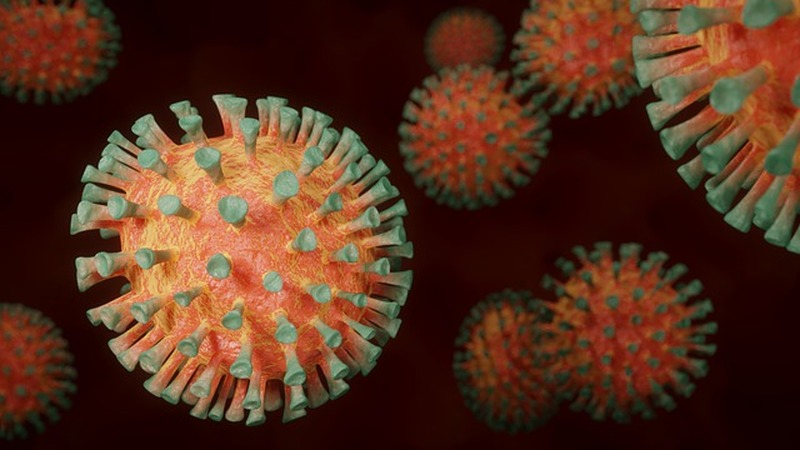SARS-CoV-2 and Its Evolution: The Development of Viral Strains
Though the first case of the SARS-CoV-2 virus was recorded nearly two years ago, infections from the virus continue to be highly reported across the globe. Often referred to as coronavirus disease 19, or COVID-19, the disease caused by this virus has been highly pervasive partially because of the development of different viral strains.
To understand the evolution of SARS-CoV-2 and its strains, it is first necessary to understand what viruses are and how they operate. A virus is a microscopic particle that contains genetic instructions (either DNA or RNA) contained within a capsid, or protein coating. It is important to note that viruses are not living organisms; a virus cannot replicate on its own. Instead, viruses latch onto cells of a separate organism, called the “host.” The virus will seize control of the host cells’ reproductive system to make copies of itself to infect more cells. When viruses replicate within host organisms, slight, random changes called mutations can occur in the genetic code. Some mutations have no effect on a virus’s function, but others can decrease or improve its infectiousness or lethality. When one or more mutations occur in a virus’s genetic code, or genome, a viral variant is said to have developed. If a variant has different physical capabilities than the original virus it developed from, it is considered a new strain of that virus. Such differences could mean anything from a quicker replication time, or an improved ability to bind to host cells. Regardless of what the change is, any new strain is also a viral variant. Not all variants result in a new viral strain, however, as not all mutations alter the abilities of a virus.
To understand the evolution of SARS-CoV-2 and its strains, it is first necessary to understand what viruses are and how they operate. A virus is a microscopic particle that contains genetic instructions (either DNA or RNA) contained within a capsid, or protein coating. It is important to note that viruses are not living organisms; a virus cannot replicate on its own. Instead, viruses latch onto cells of a separate organism, called the “host.” The virus will seize control of the host cells’ reproductive system to make copies of itself to infect more cells. When viruses replicate within host organisms, slight, random changes called mutations can occur in the genetic code. Some mutations have no effect on a virus’s function, but others can decrease or improve its infectiousness or lethality. When one or more mutations occur in a virus’s genetic code, or genome, a viral variant is said to have developed. If a variant has different physical capabilities than the original virus it developed from, it is considered a new strain of that virus. Such differences could mean anything from a quicker replication time, or an improved ability to bind to host cells. Regardless of what the change is, any new strain is also a viral variant. Not all variants result in a new viral strain, however, as not all mutations alter the abilities of a virus.
Image Source: whitesession
This process of viral mutation is what allows a virus like SARS-CoV-2 to keep evolving. The SARS-CoV-2 virus enters host cells through a structure on its viral membrane called the spike (S) protein, which has two subunits, called S1 and S2. The S1 subunit recognizes and attaches to receptors on the host cell, while the S2 subunit helps the virus fuse with the host cell to release viral genetic material into the host. Since the S protein allows the SARS-CoV-2 virus to attach to and infect organisms, mutations in the S protein gene are extremely important to study. Certain mutations in this gene could make the virus more likely to latch onto other cells, and thus make it more contagious.
Though not all mutations have an effect, it is important to try to minimize the evolution of SARS-CoV-2 as much as possible to prevent more dangerous strains from developing. As more humans get infected and become hosts for the virus, the likelihood of harmful mutations occuring and accumulating increases. A major concern with new strains evolving is that vaccines created to target previously known strains may be ineffective against future ones; more severe infections could occur as a result. While no vaccine is guaranteed to completely prevent infection, getting vaccinated against SARS-CoV-2 has been shown to reduce the severity of symptoms in many cases, and to prevent infection at all in others. As of January 2022, early studies suggest that the mRNA vaccines created to combat the original strain of SARS-CoV-2 still offer protection against current strains of the virus, though to varying degrees. Although this may change as the virus continues to mutate, following the recommendations for vaccinations and booster shots outlined by the Centers for Disease Control and Prevention will help prevent the virus from infecting humans, mutating, and developing into further variants.
Though not all mutations have an effect, it is important to try to minimize the evolution of SARS-CoV-2 as much as possible to prevent more dangerous strains from developing. As more humans get infected and become hosts for the virus, the likelihood of harmful mutations occuring and accumulating increases. A major concern with new strains evolving is that vaccines created to target previously known strains may be ineffective against future ones; more severe infections could occur as a result. While no vaccine is guaranteed to completely prevent infection, getting vaccinated against SARS-CoV-2 has been shown to reduce the severity of symptoms in many cases, and to prevent infection at all in others. As of January 2022, early studies suggest that the mRNA vaccines created to combat the original strain of SARS-CoV-2 still offer protection against current strains of the virus, though to varying degrees. Although this may change as the virus continues to mutate, following the recommendations for vaccinations and booster shots outlined by the Centers for Disease Control and Prevention will help prevent the virus from infecting humans, mutating, and developing into further variants.
Featured Image Source: BlenderTimer
RELATED ARTICLES
|
Vertical Divider
|
Vertical Divider
|
Vertical Divider
|






